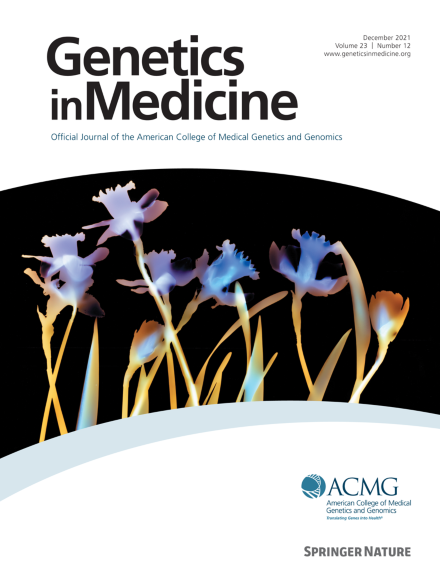聚乙二醇valiase治疗苯丙酮尿:药剂师主导的聚乙二醇valiase项目中真实世界的安全性、有效性和药物获取结果。
IF 6.6
1区 医学
Q1 GENETICS & HEREDITY
引用次数: 0
摘要
目的:考虑到聚乙二醇化酶的复杂性和密切监测需求,我们评估了在药剂师主导的聚乙二醇化酶药物治疗项目中管理的苯丙酮尿症(PKU)患者的现实临床结果。方法:回顾性分析2018年5月至2024年5月在明尼苏达州明尼阿波利斯市M Health Fairview的PKU诊所接受pegvaliase治疗的51例PKU患者。收集的数据包括基线特征、付款人授权结果、治疗史、苯丙氨酸水平、不良事件和管理策略。结果:12个月时,55%的患者达到Phe目标(360 umol/L), 24个月时增加到77%。在维持剂量的患者中,87%的患者在12个月时Phe减少≥20%,在24个月时增加到93.5%。与pegvaliase单药治疗相比,saproproterin和pegvaliase联合治疗与更快的Phe目标实现相关(p=0.0599)。31%的患者发生过敏反应,主要发生在维持期。所有患者都成功地开始了治疗,没有进入障碍,尽管35%的患者需要上诉保险批准。常见的不良事件包括注射部位反应(90%)和关节痛(69%)。特殊人群,包括一名青少年和两名孕妇被安全地使用pegvaliase。结论:Pegvaliase可有效降低PKU患者的苯丙氨酸水平,但存在过敏反应和其他不良事件的显著风险。药剂师主导的项目和跨学科合作对于及时获取和有效管理至关重要。本文章由计算机程序翻译,如有差异,请以英文原文为准。
Pegvaliase therapy for phenylketonuria: Real-world safety, efficacy, and medication access outcomes in a pharmacist-led pegvaliase program
Purpose
Given the complexity and close monitoring needs of pegvaliase, we evaluated the real-life clinical outcomes of patients with phenylketonuria (PKU) managed in a pharmacist-led pegvaliase pharmacotherapy program.
Methods
A review of 51 PKU patients initiated on pegvaliase at the PKU clinic of M Health Fairview, Minneapolis, MN, between May 2018 and May 2024 was conducted. Data collected included baseline characteristics, payer authorization outcomes, treatment history, phenylalanine (Phe) levels, adverse events, and management strategies.
Results
At 12-months, 55% of patients achieved Phe goal (360 μmol/L), increasing to 77% at 24 months. Among patients on maintenance doses, 87% achieved ≥20% Phe reduction at 12 months, rising to 93.5% at 24 months. Combination therapy with sapropterin and pegvaliase was associated with faster Phe goal attainment compared with pegvaliase monotherapy (P = .0599). Anaphylaxis occurred in 31% of patients, predominantly during the maintenance phase. All patients successfully initiated therapy without access barriers, although 35% required appeals for insurance approval. Common adverse events included injection site reactions (90%) and arthralgia (69%). Special populations, including 1 adolescent and 2 pregnant women, were safely managed on pegvaliase.
Conclusion
Pegvaliase effectively reduced Phe levels in PKU patients, although it carried significant risks of anaphylaxis and other adverse events. A pharmacist-led program and interdisciplinary collaboration was crucial for prompt access and effective management.
求助全文
通过发布文献求助,成功后即可免费获取论文全文。
去求助
来源期刊

Genetics in Medicine
医学-遗传学
CiteScore
15.20
自引率
6.80%
发文量
857
审稿时长
1.3 weeks
期刊介绍:
Genetics in Medicine (GIM) is the official journal of the American College of Medical Genetics and Genomics. The journal''s mission is to enhance the knowledge, understanding, and practice of medical genetics and genomics through publications in clinical and laboratory genetics and genomics, including ethical, legal, and social issues as well as public health.
GIM encourages research that combats racism, includes diverse populations and is written by authors from diverse and underrepresented backgrounds.
 求助内容:
求助内容: 应助结果提醒方式:
应助结果提醒方式:


